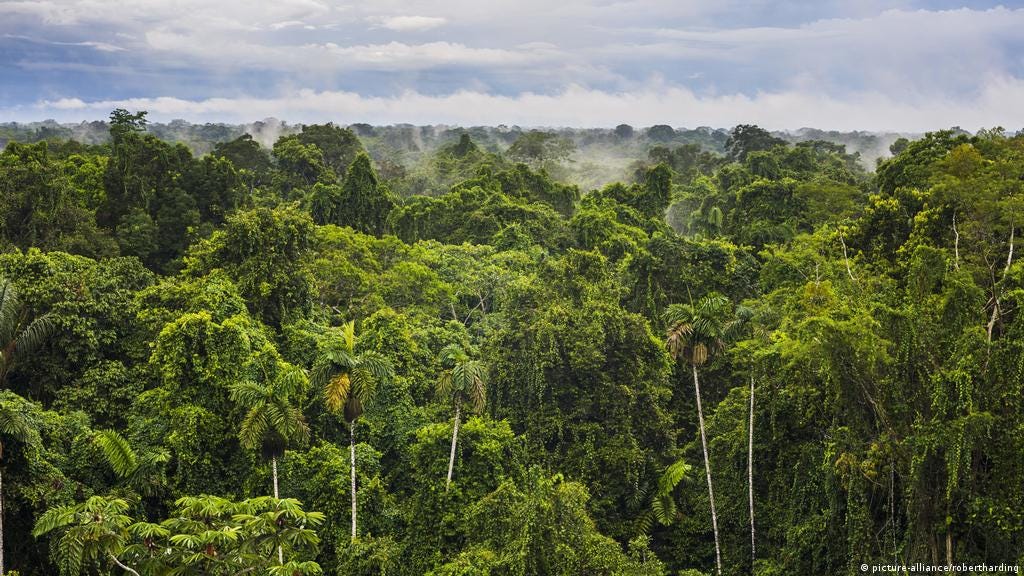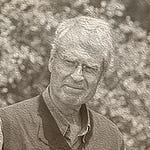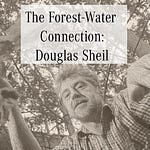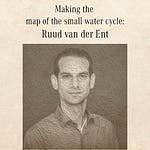Francina Dominguez, a hydroclimatologist at the University of Illinois has been figuring out where our rain comes from. She has been tracking water as it moves across our continents. The process of moisture hopping, or moisture recycling (also known as the small water cycle in other circles), is the movement of water from air to land to air to land and so on - rain falls to the land, and then evapotranspires back up to form rain again.
She studied the droughts in the US Midwest in 2012, and found that the droughts there were related to the drought in California. Rains hop inland from California to the Midwest. When there is less water vapor in California, there will be a less moisture hopping inland. [1]
Francina Dominguez has also been researching the behavior of rain in South America. Having grown up in Colombia, which is home to part of the Amazon rainforest, she was motivated to stop it from being chopped down. When she became a hydroclimatologist, she used climate models to study the effect Amazonian deforestation would have on the water cycle.
Her simulations found something quite surprising.
Climate modelers do not always know what effects will emerge out of their models. They put in various equations and various parameters into their models, and then they wait for it to emerge a result. When Francina Dominguez modeled deforestration in the Amazon she was expecting to find that moisture recycling (aka the small water cycle) would decrease as forests were chopped down. What she instead found, to her surprise, was that the moisture recycling stayed the same, and it was the wind that increased. When the trees were cut down, the wind blew in faster which made it harder for the water vapor molecules to coalesce to form rain. Deforestation led to wind increase, and the wind increase led to rain reduction. Or to state it another way as a maxim - forests makes less wind, less wind makes more rain. [2,3,4,5,6]
Francina Dominguez has also studied the interaction of groundwater and climate. (listen at 51:58). At first glance it might seem that groundwater would not affect drought and rainfall patterns. After all groundwater is underground and not touching the air. But water is a complex systems phenomena, understanding one part often requires understanding how all the parts fit together. What Francina found in her models was that groundwater would have a significant effect on rain, because it was being brought up by the root systems of the vegetation, and then would evapotranspire into the air to increase the moisture content in the air. Groundwater levels thus affect drought and rainfall patterns. [7,8]
Water all around the world forms a large, interconnected system, and Francina Dominguez has been helping clarify some of these interconnections.
……………………………………………………………………………….
Some excerpts from interview (with slight edits where there was some unclarity)
Francina: All the wind patterns and the circulation is affected when you deforest, so you are actually shifting the rain downwind. In order to have rain you need convergence of this moisture in a certain region. When you deforest you are creating divergence, you are taking this moisture from the region, and having it rain downwind.
The Amazonian deforestration has big local impacts, and in terms of the affect downwind of it , I don’t have enough evidence to link any kind of drought in Argentina to Amazonian deforestration. I do get asked this question a lot. When I started this research I thought for sure this is the case, but now I don’t know, none of my studies have conclusively shown this. The difference is that you have more water coming in from the ocean, so that even if you have less local water, you do not see a huge change in the precipitation in Argentina.
Alpha: Why is there more water coming in from the ocean when you deforest?
Francina: Because of circulation, this is the crazy thing about this problem, our hypothesis right now is that when you deforest you are creating a surface that is less rough, so the wind accelerates, so you have stronger winds over deforested regions, When you cut down all these tall trees, then you have an acceleration of the wind that then brings in more water from the ocean.
Me: Doesn’t water vapor flow at heights as high as 1000m, the trees are only about 20m tall, how can something like a tree that is 20m tall affect something as high as a 1000m?
Francina: Because surface roughness is super important up until the entire boundary level, which can be 2000 meter in height. So the surface roughness is a super important characteristic of the low level winds.
Alpha: So by analogy you can imagine a smooth pipe and a rough pipe, where the rough pipe would create a lot of turbulent flow as water flows through it.
Francina : Yes. If you deforest the Amazon, it will be warmer at the surface, you will have more convection, but on the other hand you also have less roughness. You have two types of turbulence, one type of turbulence is convection/buoyancy, and another type is turbulence because of the roughness. What we found is that in the Amazon the roughness is winning.
Many of these processes are a function of the scale that you are looking at. Most of the work has been done is done with global climate models which are coarse resolution, so they have to approximate what happens in a grid scale, it’s too big to be able to a convective storm or details of the topography, in general when you go to higher resolution you are able to get more realistic picture of what is going on. This work was done at 20 km resolution. At larger cells there are many approximations and parametizations, so at higher resolution you make less assumptions.
On groundwater-rain coupling:
Francina: When you are doing climate modelling, you are really interested in sources of memory, parts of the system that vary at long time scales. The ocean is currently the most important source of memory for the climate system, that’s why we need to get the oceans to get the climate right. One of the things my group is working on is groundwater, and it’s a similar problem in that the groundwater varies really slowly. If you have vegetation that taps into that groundwater they have this continuous source of moisture than if they just rely on precipitation. We have shown for South America that when you include groundwater, there is this large region of the La Plata region, you are better able to represent the precipitation and temperature patterns because you are representing the groundwater better. If you do not have the plants that can tap into this groundwater then you are not getting that biophysical mechanism that links the below ground to the atmosphere. So what we are trying to do, is that say okay most models have a maximum rooting depth of 2 meters, but in reality you can have 20 meter root systems, especially in the Amazon. If you include the groundwater and the roots are we able to capture the longer scale oscillations are we better able to represent precipitation patterns.
Alpha: We have wet season and dry season. In dry season the groundwater can evapotranspire to create rain, so there are less extremes of rain
Francina: Exactly.
……………………………………………………………………………….
If you want to download and listen to this podcast on your phone, look for the Substack app in the app store, and then download it. There is an app for Android and one for Iphone. On the app look for this podcast, then click on the Substack icon button on the bottom right corner to download it onto your phone. This podcast is also on Apple podcasts and Spotify in the Climate Water Project channel.
(If you like this post, feel free to share it with your friends by clicking on the share button)
References
[1] Herrera‐Estrada, Julio E., J. Alejandro Martinez, Francina Dominguez, Kirsten L. Findell, Eric F. Wood, and Justin Sheffield. "Reduced moisture transport linked to drought propagation across North America." Geophysical Research Letters 46, no. 10 (2019): 5243-5253.
[2] Eiras-Barca, J., Dominguez, F., Yang, Z., Chug, D., Nieto, R., Gimeno, L. and Miguez-Macho, G. (2020), Changes in South American hydroclimate under projected Amazonian deforestation. Ann. N.Y. Acad. Sci., 1472: 104-122. https://doi.org/10.1111/nyas.14364
[3] Sud, Y. C., Shukla, J., & Mintz, Y. (1988). Influence of Land Surface Roughness on Atmospheric Circulation and Precipitation: A Sensitivity Study with a General Circulation Model, Journal of Applied Meteorology and Climatology, 27(9), 1036-1054. Retrieved Oct 6, 2022, from https://journals.ametsoc.org/view/journals/apme/27/9/1520-0450_1988_027_1036_iolsro_2_0_co_2.xml
[4] Yang, Zhao, and Francina Dominguez. "Investigating land surface effects on the moisture transport over South America with a moisture tagging model." Journal of Climate 32, no. 19 (2019): 6627-6644.
[5] Chug, Divyansh, Francina Dominguez, and Zhao Yang. "The Amazon and La Plata River Basins as Moisture Sources of South America: Climatology and Intraseasonal Variability." Journal of Geophysical Research: Atmospheres 127, no. 12 (2022): e2021JD035455
[6] Martinez, J. Alejandro, and Francina Dominguez. "Sources of atmospheric moisture for the La Plata River basin." Journal of Climate 27, no. 17 (2014): 6737-6753
[7] Martinez, J. Alejandro, Francina Dominguez, and Gonzalo Miguez-Macho. "Effects of a groundwater scheme on the simulation of soil moisture and evapotranspiration over southern South America." Journal of Hydrometeorology 17, no. 11 (2016): 2941-2957.
[8] Martinez, J. Alejandro, Francina Dominguez, and Gonzalo Miguez-Macho. "Impacts of a groundwater scheme on hydroclimatological conditions over southern South America." Journal of Hydrometeorology 17, no. 11 (2016): 2959-2978
[9] Roy, Tirthankar, J. Alejandro Martinez, Julio E. Herrera-Estrada, Yu Zhang, Francina Dominguez, Alexis Berg, Mike Ek, and Eric F. Wood. "Role of moisture transport and recycling in characterizing droughts: Perspectives from two recent US droughts and the CFSv2 system." Journal of Hydrometeorology 20, no. 1 (2019): 139-154.
[10] Gimeno, Luis, Francina Dominguez, Raquel Nieto, Ricardo Trigo, Anita Drumond, Chris JC Reason, Andréa S. Taschetto, Alexandre M. Ramos, Ramesh Kumar, and José Marengo. "Major mechanisms of atmospheric moisture transport and their role in extreme precipitation events." Annual Review of Environment and Resources 41 (2016): 117-141.
[11] Talk by Francina Dominguez












